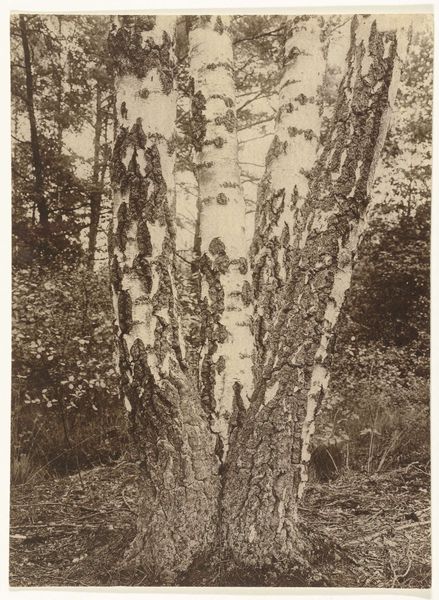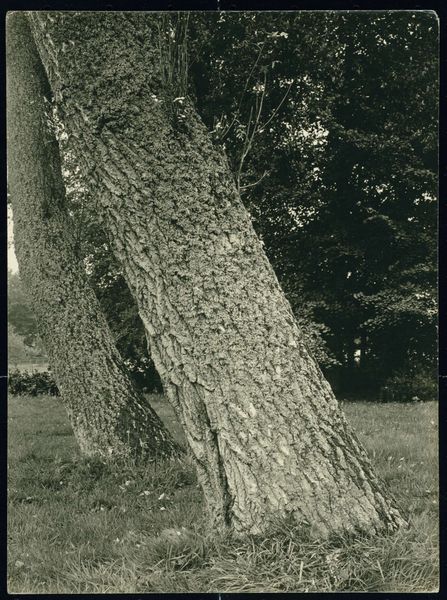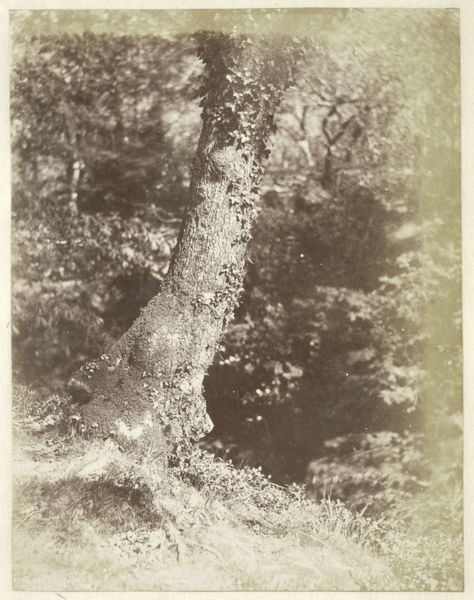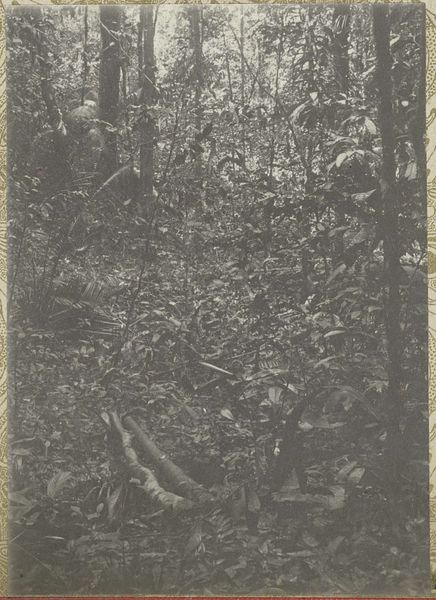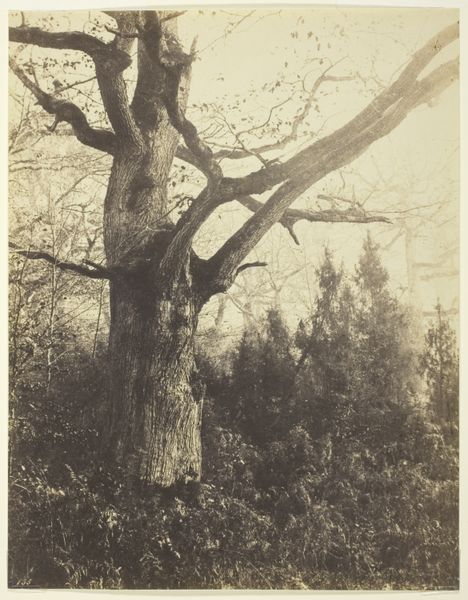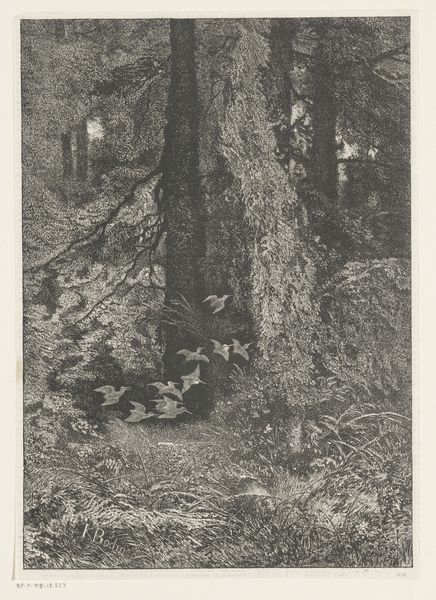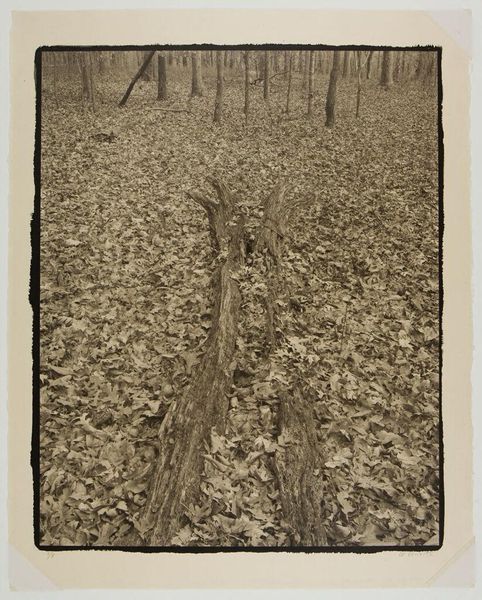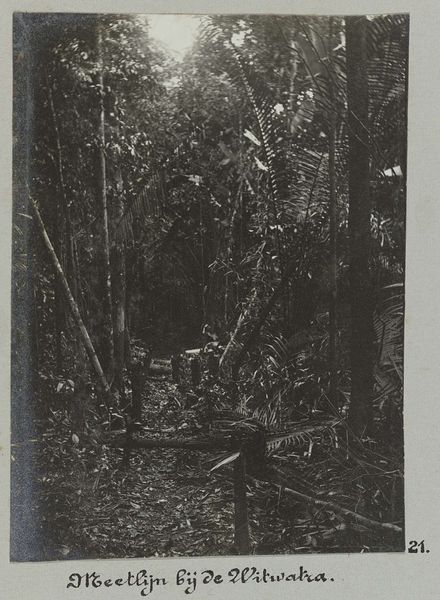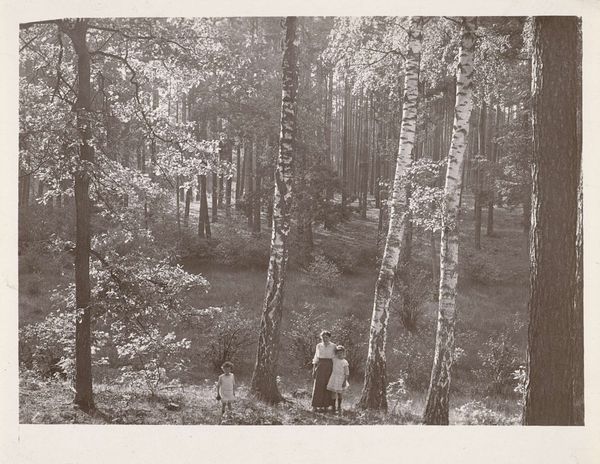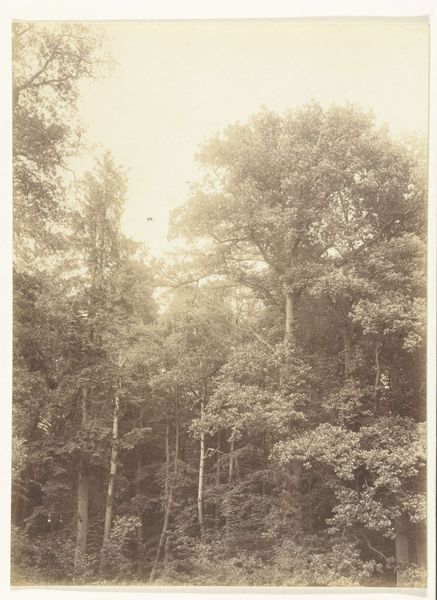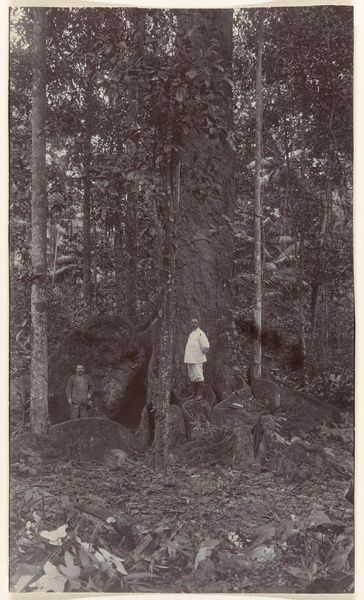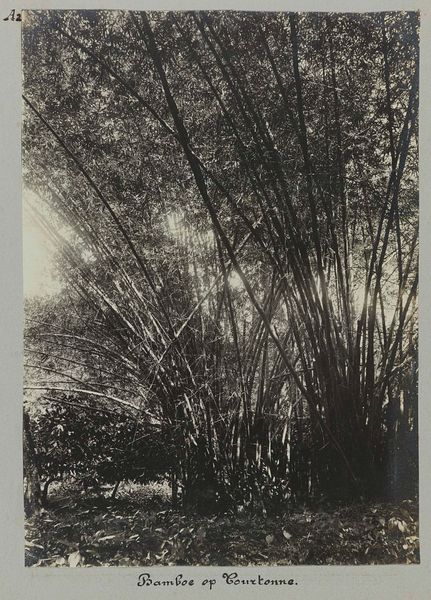
print, photography
#
vegetal
#
mother nature
# print
#
organic shape
#
landscape
#
natural composition
#
nature
#
photography
#
natural texture
#
natural palette
#
naturalism
#
organic texture
#
natural form
#
realism
#
nature closeup
Dimensions: height 225 mm, width 170 mm
Copyright: Rijks Museum: Open Domain
Editor: Here we have Richard Tepe’s "Stam van de Reuzen Berk in het Willem Anne Bos bij Voorst," a photograph from between 1900 and 1930. It's a striking close-up of a birch tree trunk. What strikes me is how monumental the ordinary becomes when viewed so closely; almost reverential. How do you interpret the significance of isolating this tree trunk in this way? Curator: Indeed. The isolation elevates the trunk, transforming it into an almost totemic image. The birch, across cultures, often represents renewal and adaptability, a symbol deeply embedded in folklore. Consider its bark – like parchment, holding the stories of the forest. What cultural echoes do you hear in its texture? Editor: That's fascinating. The bark does seem to almost... whisper something, with its peeling layers. I hadn't thought about that aspect of it at all, or its relation to lore! Curator: Think about the Romantic era's fascination with nature – this image could be seen as a continuation of that reverence. The "Giant Birch" isn't just a tree; it's a marker of time, a witness. How does that sense of silent witnessing inform your understanding of the photograph's emotional impact? Editor: I guess it makes the tree almost human, imbuing it with wisdom accumulated over decades. And maybe that encourages viewers to consider their own relationship to the natural world? Curator: Precisely. Tepe captured a sense of the eternal, the cyclical rhythm of nature. And perhaps, that invites a deeper questioning of our place within it all. It reminds us of the profound symbolism in the everyday. Editor: I definitely look at this image differently now. Thank you, I learned a lot! Curator: And so did I. Looking closely always reveals fresh perspectives, doesn’t it?
Comments
No comments
Be the first to comment and join the conversation on the ultimate creative platform.
